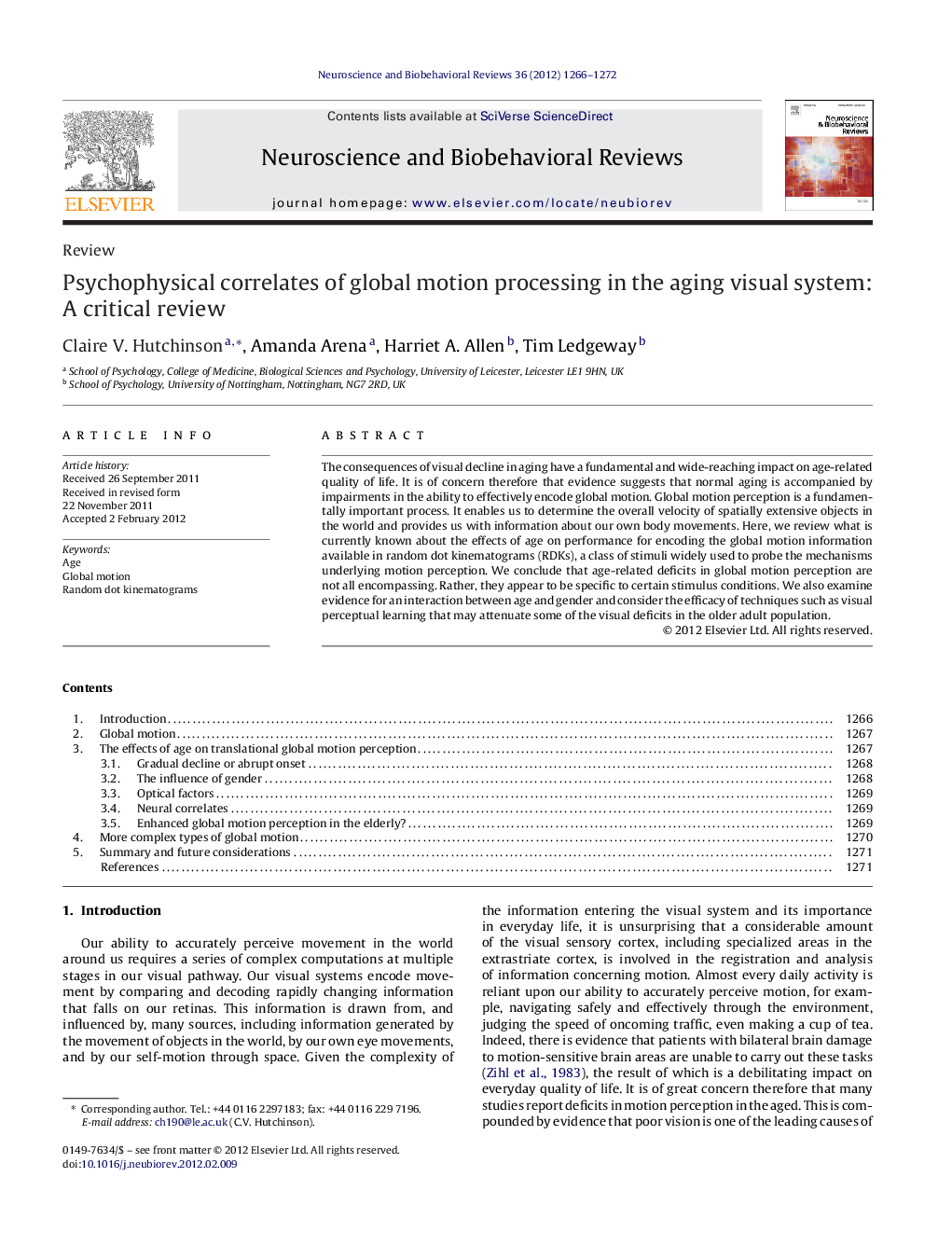| Article ID | Journal | Published Year | Pages | File Type |
|---|---|---|---|---|
| 937549 | Neuroscience & Biobehavioral Reviews | 2012 | 7 Pages |
The consequences of visual decline in aging have a fundamental and wide-reaching impact on age-related quality of life. It is of concern therefore that evidence suggests that normal aging is accompanied by impairments in the ability to effectively encode global motion. Global motion perception is a fundamentally important process. It enables us to determine the overall velocity of spatially extensive objects in the world and provides us with information about our own body movements. Here, we review what is currently known about the effects of age on performance for encoding the global motion information available in random dot kinematograms (RDKs), a class of stimuli widely used to probe the mechanisms underlying motion perception. We conclude that age-related deficits in global motion perception are not all encompassing. Rather, they appear to be specific to certain stimulus conditions. We also examine evidence for an interaction between age and gender and consider the efficacy of techniques such as visual perceptual learning that may attenuate some of the visual deficits in the older adult population.
► We review what is known about the effects of age on global motion perception. ► Normal aging selectively compromises some aspects of global motion processing. ► Other aspects of global motion perception are unaffected by or improve with age. ► Global motion perception may be particularly impaired in older women. ► Many reported deficits are likely to reflect age-related changes in visual cortex.
